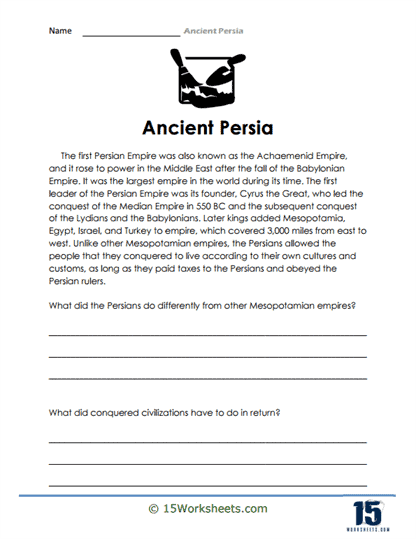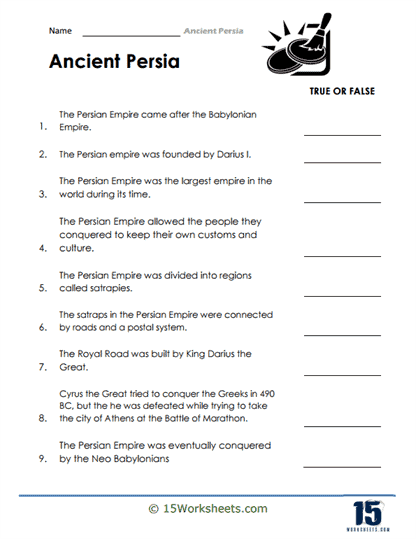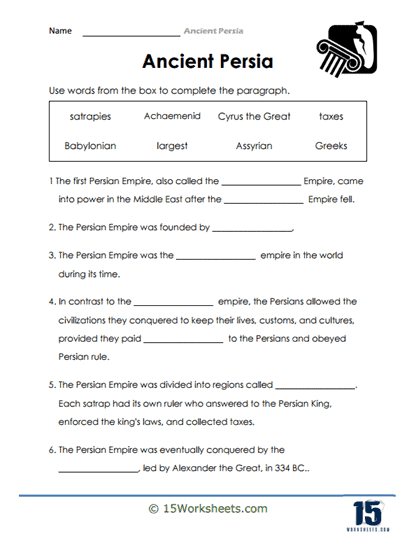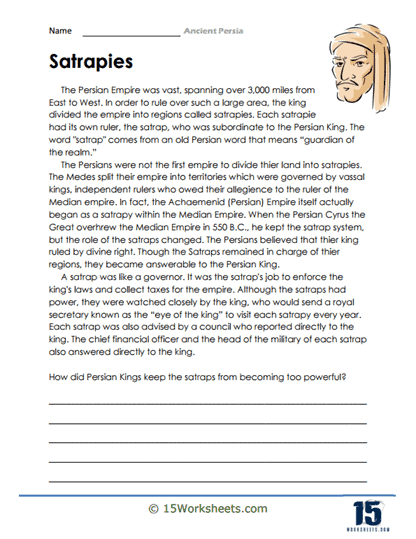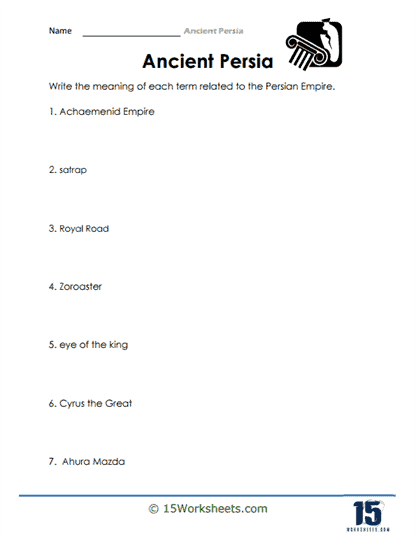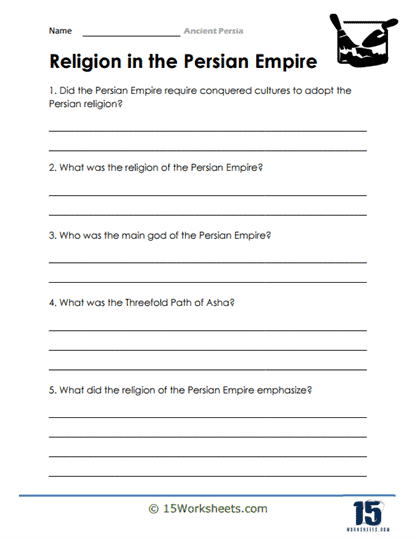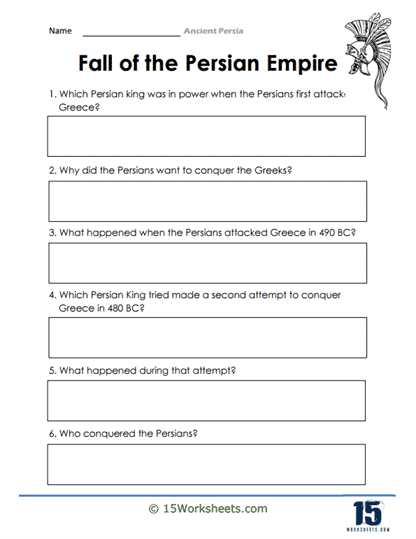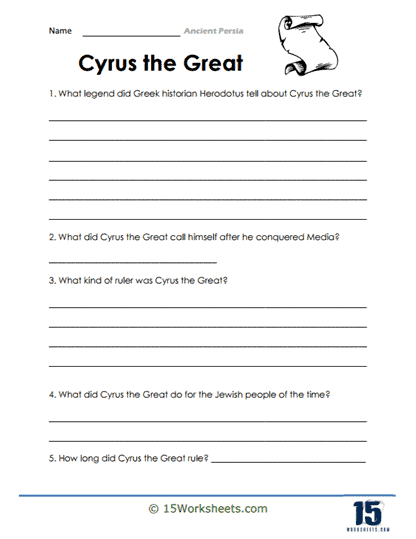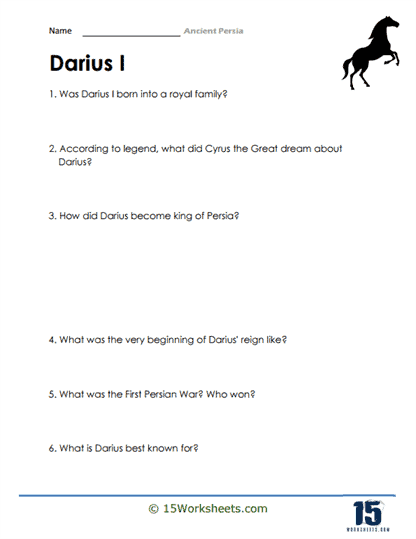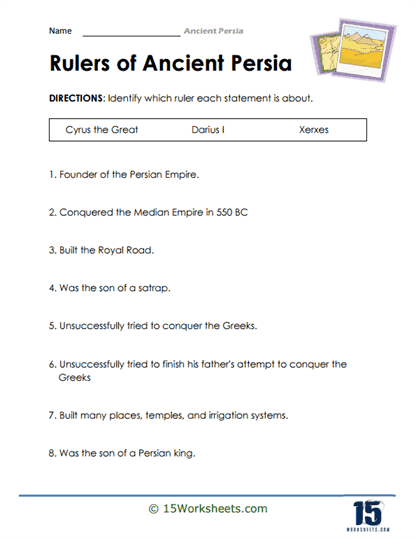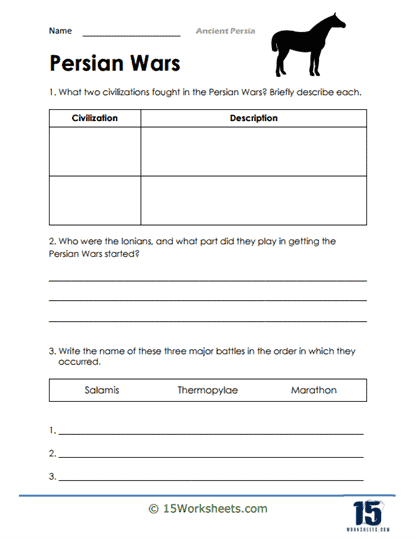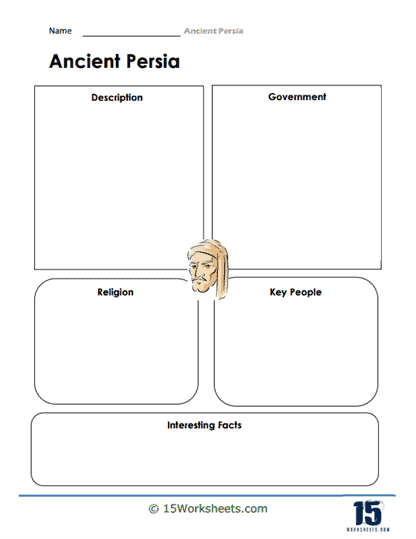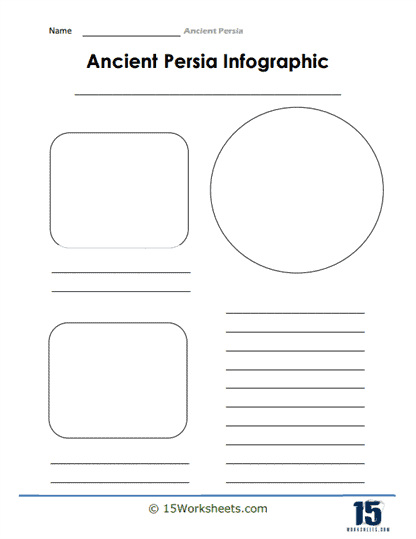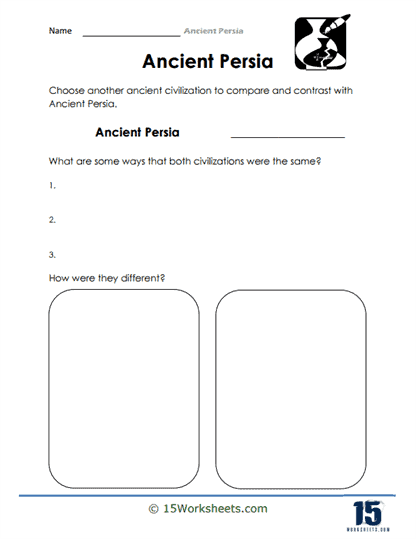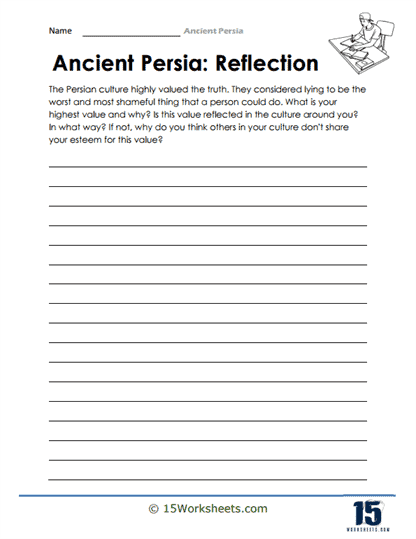Ancient Persia Worksheets
All About These 15 Worksheets
Students explore the many facets of the ancient Persian Empire with this comprehensive series of 15 worksheets. This collection is designed to transport them back in time to discover the rich history, culture, and accomplishments of one of the most influential civilizations in antiquity. Through engaging activities and informative resources, students will gain a deeper understanding of ancient Persia and its enduring impact on the world. By completing these worksheets, students will:
- Demonstrate their knowledge of the history and other aspects of Ancient Persia by filling in the blanks or answering writing prompts;
- Engage their critical thinking skills by determining the accuracy of statements about Ancient Persia and write their own definitions for various terms and concepts, broadening their understanding further;
- Learn all about the different empires that rose, and satraps and their role in the history of Ancient Persia by thoroughly reading assigned passages, answering relevant questions, and doing further research;
- Synthesize all the information they learned by creating a detailed infographic about Ancient Persia;
- Be familiar with all the notable rulers of Ancient Persia, their history and contributions to the civilization;
- Foster their independent research skills by doing a deep dive into the civilizations that fought in the Persian Wars;
- Effectively show the similarities and differences of Ancient Persia and another ancient civilization of their choice, honing their critical thinking skills;
- And reflect on their most esteemed values or principles in life and whether they share it with the culture they grew up in, the same way people in Ancient Persia held their own values to the highest standard.
Engaging with these worksheets will transport students to the captivating world of ancient Persia, fostering a deep understanding and appreciation for its history, culture, and contributions to human civilization. Through engaging activities, students will develop critical thinking skills, broaden their knowledge of ancient civilizations, and gain insights into the extraordinary achievements of the Persian Empire.
What Was Significance of Ancient Persia?
Ancient Persia, particularly the Achaemenid Empire, holds great significance in history due to its remarkable accomplishments and distinct characteristics that set it apart from other ancient civilizations. Here are some key aspects that highlight the significance and uniqueness of Ancient Persia:
- Vast empire – The Achaemenid Empire encompassed a vast territory stretching from the Mediterranean to the Indus River, making it one of the largest empires in ancient history. Its sheer size and diverse population brought together different cultures, languages, and traditions, fostering a sense of unity and multiculturalism.
- Administrative innovations – The Persian Empire introduced efficient administrative systems, including the division of the empire into provinces known as satrapies, each governed by a satrap (governor). This decentralized administrative structure allowed for local autonomy while maintaining overall control.
- Tolerance and diversity – Ancient Persia was known for its policy of religious and cultural tolerance. Cyrus the Great, founder of the Achaemenid Empire, notably respected the customs and beliefs of conquered peoples, allowing for cultural diversity and fostering peaceful coexistence.
- Infrastructure and urban planning – The Persians invested in extensive infrastructure projects, such as the construction of the Royal Road, which facilitated communication and trade across the empire. They also displayed advanced urban planning skills, exemplified by the magnificent city of Persepolis with its grand palaces and elaborate architecture.
- Zoroastrianism – Ancient Persia was the birthplace of Zoroastrianism, one of the world’s oldest known monotheistic religions. Zoroastrianism emphasized the struggle between good and evil, the importance of ethical choices, and the belief in a judgment day. Its influence on Persian culture and later religions, such as Judaism and Christianity, is significant.
- Art and architecture – Persian art and architecture showcased a distinct style characterized by intricate stone carvings, majestic palaces, and grand monumental structures. The magnificent ruins of Persepolis and the intricate rock reliefs at Naqsh-e Rustam stand as enduring testaments to the Persian Empire’s artistic achievements.
- Enduring cultural legacy – The Persian Empire left a lasting cultural and intellectual legacy. Persian literature, poetry, and philosophy flourished, with notable figures like Rumi and Omar Khayyam producing enduring works. Persian influence on various aspects of civilization, including language, architecture, and governance, can be seen throughout history.
The significance of Ancient Persia lies in its ability to create a powerful empire that embraced diversity, showcased innovative governance systems, and made enduring contributions to art, literature, and religion. Its influence on subsequent civilizations, as well as its unique characteristics, set it apart from other ancient societies and make it a captivating subject of study and admiration.
The Notable Rulers of Ancient Persia
The ancient Persian Empire was home to several remarkable rulers who left an indelible mark on history. Among these notable figures, Cyrus the Great, Darius I, and Xerxes stand out as influential rulers who shaped the course of the empire and left lasting legacies. From the visionary leadership of Cyrus, who founded the Achaemenid Empire, to the administrative prowess of Darius I and the ambitious endeavors of Xerxes, these Persian kings played pivotal roles in expanding the empire, implementing innovative reforms, and leaving an enduring cultural and historical impact. Let’s explore the lives and achievements of these exceptional rulers:
- Cyrus the Great (r. 559 BCE – 530 BCE) – Cyrus the Great was the founder of the Achaemenid Empire and one of the most esteemed figures in Persian history. Known for his military successes, he conquered vast territories and established a multicultural empire. Cyrus is celebrated for his humane approach to governance, respecting the customs and religions of the peoples he conquered. His notable achievements include the liberation of the Jewish people from Babylonian captivity and the issuance of the famous Cyrus Cylinder, which emphasizes his commitment to justice and freedom.
- Darius I (r. 522 BCE – 486 BCE) – Darius I, also known as Darius the Great, ascended to the Persian throne after a period of political unrest. Under his rule, the Achaemenid Empire experienced significant administrative and organizational reforms. Darius divided the empire into satrapies, appointed satraps (governors), and established an efficient bureaucracy to govern the diverse regions. He also oversaw impressive construction projects, including the royal palaces at Persepolis. Darius’ reign marked a period of stability, prosperity, and expansive territorial growth.
- Xerxes I (r. 486 BCE – 465 BCE) – Xerxes, son of Darius I, inherited a vast empire and sought to extend Persian influence further. He is famously known for leading the Persian invasion of Greece, which included the historic Battle of Thermopylae. Despite initial successes, the Persian campaign ultimately ended in defeat. Xerxes, however, continued to focus on architectural projects, such as completing the grand construction projects initiated by his father, including the Hall of Hundred Columns at Persepolis.
These notable rulers of Ancient Persia played pivotal roles in shaping the empire’s destiny, expanding its territories, implementing administrative reforms, and leaving a lasting cultural and historical legacy. Their leadership and accomplishments continue to be studied and appreciated, highlighting the remarkable contributions of Ancient Persia to world history.

